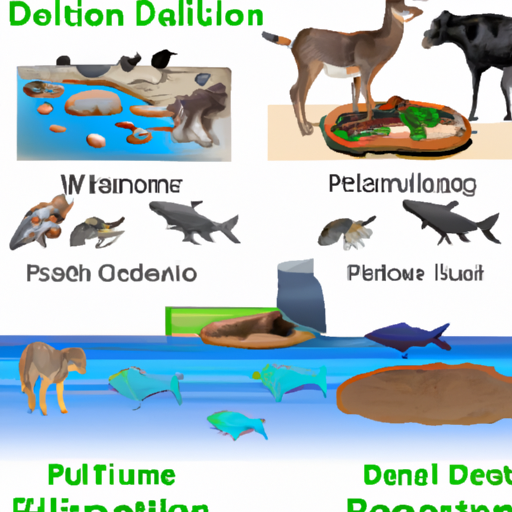 Introduction:
Introduction:
Water pollution is a global environmental issue that poses a significant threat to the health of aquatic ecosystems and ultimately affects the well-being of all living organisms. While human activities are often recognized as the primary contributors to water pollution, it is important to acknowledge the role animals play in this complex ecological problem. Animals, both domesticated and wild, have the potential to significantly impact water quality through various mechanisms. This article aims to provide a comprehensive examination of how animals affect water pollution, exploring their role as both sources and indicators of environmental contamination.
Sources of Animal-Induced Water Pollution:
1. Agricultural Runoff: Animals reared for commercial purposes, such as livestock and poultry, generate considerable amounts of waste. When these waste products, including manure and urine, are not properly managed, they can be washed into nearby water bodies through rainfall or irrigation runoff. This runoff carries with it excess nutrients like nitrogen and phosphorus, leading to eutrophication, harmful algal blooms, and oxygen depletion in aquatic ecosystems.
2. Domestic Animal Waste: Pets and domestic animals in urban areas can also contribute to water pollution. Improper disposal of pet waste, when left on the ground or washed into storm drains, can contaminate water bodies with harmful bacteria, parasites, and excess nutrients. This contamination poses a risk to both human health and the health of aquatic organisms.
3. Wildlife Interactions: Wild animals, such as birds and mammals, can indirectly contribute to water pollution through their feeding habits. For example, certain bird species, like seagulls or waterfowl, can accumulate high levels of fecal bacteria and deposit them in water bodies, contaminating the surrounding environment. Additionally, animals that feed on fish may accumulate toxins, such as mercury or persistent organic pollutants, which can then enter the aquatic food chain and affect other species.
4. Aquaculture and Fish Farming: While aquaculture has contributed to meeting the growing demand for seafood, it also has the potential to cause water pollution. Fish farming operations, if not managed properly, can generate excess nutrients and organic waste that can degrade water quality. Overfeeding, high stocking densities, and inadequate waste management practices can lead to the accumulation of nitrogen and phosphorus in water bodies, leading to harmful algal blooms and oxygen depletion.
Indicators of Water Pollution:
1. Bioindicators: Animals can serve as bioindicators of water pollution, reflecting the health of aquatic ecosystems. Certain species, like fish, amphibians, and macroinvertebrates, are particularly sensitive to contaminants and can exhibit physiological or behavioral changes in response to water pollution. These changes can include reduced growth rates, reproductive abnormalities, or altered feeding patterns. Monitoring the health of animal populations can provide valuable insights into the extent and severity of water pollution.
2. Microorganisms: Bacteria, viruses, and other microorganisms present in water bodies can also be indicators of pollution. The presence of fecal coliform bacteria, for instance, suggests contamination with fecal matter and potentially harmful pathogens. Monitoring microbial populations and diversity can help identify pollution sources and assess the effectiveness of remediation efforts.
3. Harmful Algal Blooms (HABs): Animals can indirectly contribute to the occurrence of HABs through nutrient enrichment. Excess nutrients, primarily nitrogen and phosphorus, promote the growth of harmful algae species. These blooms can release toxins that adversely affect both aquatic organisms and animals that rely on water bodies for their survival. Monitoring HABs and their effects on animal populations can provide valuable information about the state of water quality.
Conclusion:
Animals play a significant role in water pollution, both as sources and indicators of environmental contamination. Their contribution to water pollution stems from agricultural runoff, domestic waste, wildlife interactions, and aquaculture practices. Furthermore, animals can act as bioindicators, reflecting the health of aquatic ecosystems, and their presence or absence can serve as a warning sign of pollution. Understanding the complex relationship between animals and water pollution is essential for developing effective conservation strategies and safeguarding the health and integrity of our freshwater resources. By adopting sustainable practices, improving waste management, and promoting responsible pet ownership, we can mitigate the impact of animals on water pollution and ensure the long-term sustainability of our ecosystems.
